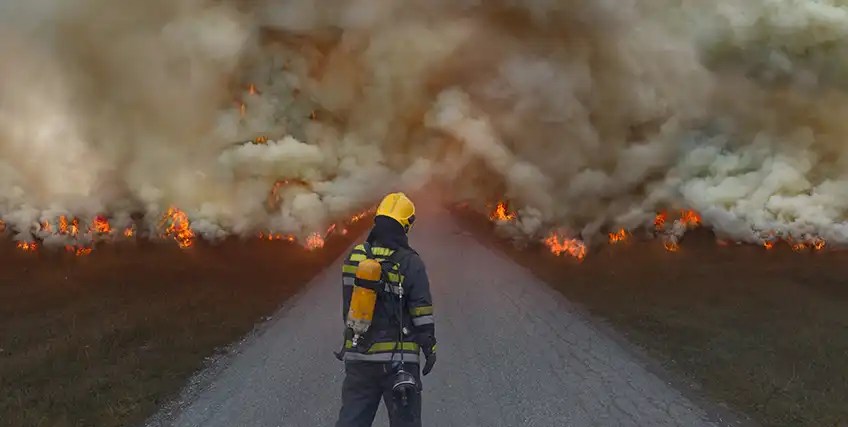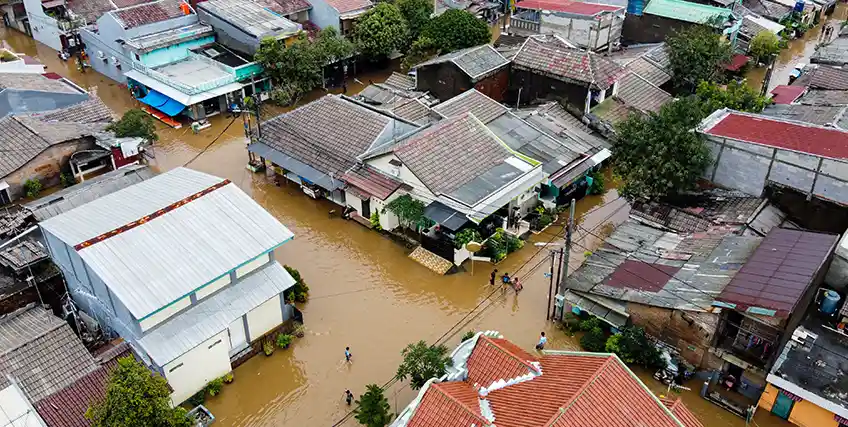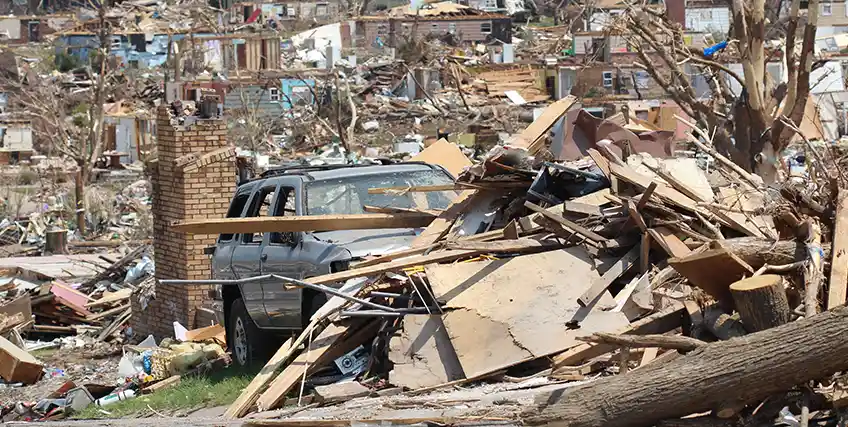
Natural disasters, like earthquakes, hurricanes, floods, wildfires, and tornadoes impact the lives of humans daily. These natural disasters change lives, damage property, and upend communities and economies. Many governments and financial institutions provide recovery loans that are designed to help individuals and businesses rebuild after a disaster.
Get a better understanding of recovery loans, how to apply for them, and ways to effectively manage a disaster recovery loan, ensuring you get back on your feet with financial stability.
What is a Disaster Recovery Loan?
Before diving into getting a recovery loan, you’ll need to understand what an economic recovery loan is. A new recovery loan is financial support designed to provide emergency funding to individuals, small businesses, and nonprofit organizations affected by natural or man-made disasters.
A disaster recovery loan is a tool used to financially help individuals, businesses, and communities recover from a natural or man-made disaster. These recovery loans are primarily offered by government agencies, such as the U.S. Small Business Administration (SBA). There are also banks and nonprofit organizations that have programs specifically designed to provide quick access to funding. All these financial support systems offer access to funds that can help improve property that has been damaged by disaster with the goal of recovering financially.
A disaster recovery loan can help businesses cover the repair or replacement of physical assets like buildings, equipment, and inventory. Businesses can use working capital to help maintain operations and regular functions if a disaster has impacted revenue streams.
The benefit of disaster recovery loans is that they can feature reasonable interest rates, accommodating terms, and repayment plans that you can manage according to your projected recovery rate. The financial funding that can be provided to you is dependent on the extent of the damage and your ability to repay it.
Your application for a disaster recovery loan will need to demonstrate that your losses or financial burdens are directly linked to a declared disaster. In this guide, we’ll walk through the application process. This typically involves assessing damages, documenting any losses, and reviewing financial need or creditworthiness.
Disaster recovery loans are vital for speeding up clean-up efforts and ensuring for the safety of those impacted by natural disasters. From hurricanes, floods, wildfires, to pandemics, sometimes we find ourselves in unexpected situations and require assistance beyond our means. With immediate financial support, disaster recovery loans can help rebuild communities, prevent further economic decline, and support ongoing efforts to transform after such unexpected conditions.
In the aftermath of a disaster, financial recovery loans offer both individuals and businesses a pathway back to stability. Here is a quick overview of what to expect for a recovery loan and which organizations to turn to in this time of need.
Recovery loans may offer:
- Lower interest rates
- Deferred repayment options
- Flexible usage
Recovery loans are provided by:
- Government agencies (like the U.S. SBA)
- Banks and credit unions
- International organizations (e.g., World Bank)
- NGOs and relief funds
Types of Recovery Loans
Recovery loans can be offered in a variety of different formats. Here is a quick overview of the types of recovery loans that you can further research in order to understand what might work best for your needs.
SBA Disaster Loans
These are loans that are offered by the U.S. Small Business Administration (SBA). They provide financial help for recovery loans for:
- Home and Personal Property Loans: For homeowners and renters to repair or replace property.
- Business Physical Disaster Loans: SME recovery loans are for businesses to repair or replace damaged assets.
- Economic Injury Disaster Loans (EIDL): Helps small businesses meet working capital needs due to disaster-induced revenue loss.
Personal Disaster Loans
These personal disaster loans are offered to individuals who may not qualify for government recovery loan aid but need funds to:
- Relocate temporarily
- Rebuild homes
- Cover medical emergencies
These loans may come from:
- Local banks
- Peer-to-peer lending platforms
- Credit unions
Eligibility Criteria for a Recovery Loan
The criteria for a recovery loan varies depending on the loan type and issuing body, but common requirements include:
- Residing or operating in a declared disaster zone
- Proof of damage or disruption
- Demonstrated ability to repay the loan
- Satisfactory credit history
- Business must be legally registered
Traditional credit requirements for faster access to recovery loans might be waived for different reasons, so it is imperative to dig deeper into your own eligibility.
Steps to get started on a Disaster Recovery Loan
Step 1: Assess Damage and Need
- Document losses: photos, videos, receipts
- Estimate financial need: repair costs, revenue loss, etc.
Step 2: Research Loan Programs
- Check local and federal government websites
- Visit disasterassistance.gov (U.S.)
- Review banks' emergency loan pages
Step 3: Prepare Application
- Complete loan application forms
- Attach financial statements, tax returns, ownership documents
- Provide a plan for fund use
Step 4: Submit and Monitor
- Submit online or via approved agencies
- Track status
- Respond quickly to requests for more info
Key Documents and Information Required
For most recovery loan applications, you will need formal documentation. Here are a few suggestions for documentation that you should have ready in order to get your application prepared:
- Government-issued ID
- Proof of residency or business ownership
- Insurance claim info (if any)
- Tax returns (usually 2-3 years)
- Business financial statements (P&L, balance sheet)
- List of damaged items and estimated repair costs
- Loan repayment plan or cash flow projections
Recovery Loan Terms and Conditions
Recovery loans typically feature specifications about amounts, interest rates, payment plans, and what your expected terms and commitments are. Here is a more detailed look at what you can expect in your recovery loan fine print:
- Loan Amounts: $500 to $2 million (or more)
- Interest Rates: Will vary
- Terms: Up to 30 years depending on need and ability to repay
- Collateral: Sometimes required for large loans
- Deferment: Repayment may be able to be deferred for 6-12 months
Always read the fine print. Check if the loan is forgivable under certain circumstances, as with some COVID-19 loans. Make sure to fully understand what each term means and how it might impact your ability to fully manage the loan and the repayment plan.
What are the Benefits of Recovery Loans?
Recovery loans are meant for just that – to help you recover from whatever disaster has taken place. There are several benefits to recovery loans, which is why people often use this financial access to get back up on their feet. Some recovery loan benefits include:
- Lower interest rates than personal loans or credit cards
- Quicker access to funds than traditional loans
- Support for continuity of operations
- Spend access for a wide range of expenses: rent, payroll, rebuilding, inventory
- Can be offered in conjunction with grants or insurance
Pitfalls to Avoid in Recovery Loans
As with any contract or agreement with a financial institution, there are rules that need to be followed. Failure to follow through with the agreement can lead to unexpected complications for your recovery loan. Here are some common challenges and the repercussions that may occur:
- Incomplete documentation: Causes delays or rejections
- Underestimating repair costs: Leads to cash shortfalls later
- Overborrowing: Can lead to unsustainable debt
- Misuse of funds: Violating loan terms could result in penalties
- Delayed application: May miss the deadline (usually 60-120 days after disaster declaration)
More Support: Complementary Assistance
Recovery loans can be combined with other forms of financial support. These opportunities are in addition to the recovery loans as a means to alleviate the burden of the disaster in a broader, more stable way. Here are some common complementary assistance programs:
- FEMA Grants (U.S.)
- Insurance payouts
- Nonprofit aid (e.g., Red Cross, Salvation Army)
- State or local grants
- Debt relief or forgiveness programs
- Crowdfunding
How to Maximize Your Recovery Loan
Applying for your recovery loan and getting approved are just the first steps in the financial relief process.
- Spend wisely: When you’re spending the recovery fund, focus on making sure the essentials are prioritized. Where are your humanitarian needs? Prioritize food, shelter, safety, and lifeline essentials.
- Track spending: If possible, use accounting software to monitor expenses so that you can clearly identify where the money is going, how it is being spent, and keep receipts organized for future proof of your recovery loan.
- Clear communication: Make sure you have open lines of communication with the lender throughout the process.
- Financial advising: If you’re managing multiple financial aid sources, consulting with a financial advisor can be helpful in keeping things on track and staying organized.
- Try many: If possible, don’t rely solely on loans. Grants, insurance, and savings are possible options for complementary financing.
Final Thoughts on Recovery Loans
Disaster recovery loans are crucial lifelines that help individuals, families, and businesses navigate the aftermath of catastrophic events. While they require preparation and planning, these loans can provide the stability needed to rebuild lives and communities.
If you’ve been impacted by a disaster, don’t delay. Research your options, get your documents in order, and take advantage of these financial tools designed to support resilience and recovery.
Frequently Asked Questions About Recovery Loans
How fast are disaster loans approved?
Disaster loans have various timelines for approval.
Are these loans forgiven like Paycheck Protection Program (PPP)?
More recovery loans are not forgivable unless explicitly stated.
Can renters apply for recovery loans?
Renters can receive loans for personal property loss, rehoming assistance, and rental insurance.
Is it possible to apply for multiple financial programs?
You can often apply for multiple financial programs, like federal, state, and nonprofit aid together.
Do you need proof of a disaster to qualify for financial recovery loans?
You will need to provide proof that you have been financially destabilized by an unexpected disaster to qualify for most loans.
Frequent searches leading to this page
Related Articles
How to Apply for an SBA Disaster Loan: Step-by-Step Guide: Which One to Choose in an Emergency?
July 2, 2025




